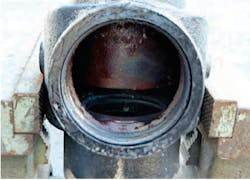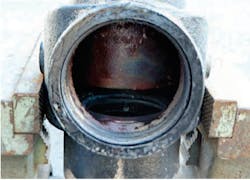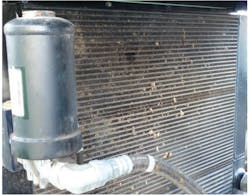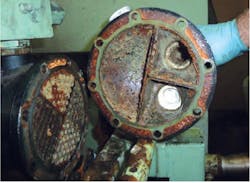When it comes to rotary screw air compressors, it is important to follow the prescribed service and maintenance program. A maintenance program is one of the most critical components of system management, since so many machines and functions within industrial facilities rely on compressed air. This helps ensure a smooth running operation and helps prevent interruptions and unexpected downtime.
First and foremost, it is important to follow the maintenance plan and service intervals to maintain your manufacturer’s warranty. This includes things such as routine oil sampling, motor greasing, and fluid changes. Using genuine manufacturer parts and fluids is a great start to maintaining your warranty.
Additional, regular service items depend on the application in which the compressor is used. For instance, if the compressor is used in a clean application, like pharmaceuticals, it will require less maintenance than when used in a dirty or dusty environment, such as a sawmill. Rotary screw air compressor components that may not necessarily be a part of routine service intervals may also need close attention and maintenance.
This article outlines some of the most common maintenance tasks.
Cleaning the coolers
While there is not a defined service interval for cleaning the coolers, overlooking them can cause the compressor to overheat and become unreliable. Thus, clean the coolers as often as needed. For example, Figure 1 shows an extremely dirty cooler with plenty of bugs to boot. Some bugs are acidic, which can damage the exterior surface of the cooler.
Spencer Hall is a field service engineer with Sullair. He joined Sullair in 2012, after working with a major distributor working on everything air related—including diesel portables, electric stationary, oil free, oil flooded, refrigerated and desiccant air treatment, and any CAT engine-powered equipment. Sullair is A Hitachi Group Company. Contact him at [email protected].
Couplings
Coupling elements should be inspected each quarter and replaced as needed, or else you’ll likely run into big problems. Not only can the coupling fail and cause vibration in the compressor, but it can also damage the pump or motor, creating even more extensive damage. Facilities from pharmaceutical plants to sawmills will both likely replace couplings at the same quarterly interval since it is a wearable item. In this case, it doesn’t matter where the machine is located or the application in which it is used. Figure 2 shows a coupling that has failed.
Water quality
The cooling water that goes through your air compressor needs to be part of your building preventive maintenance program and checked at regular intervals. If the water system is not maintained, then issues with compressors overheating and becoming unreliable can transpire quickly (see Figure 3).
The cooling water needs to be maintained to a certain standard, such as a certain pH and sediment value, and minerals that can affect your compressor’s cooling capability should be filtered out and removed. The risk can be significant if, for example, very cold water is sent through the cooling system with chemical and contaminant concentrations high. Under these conditions, the water contacts the hot fluid tubes, sediments can drop out and accumulate inside the tubes. Minerals such as calcium can buildup, preventing adequate heat transfer.
Also, ideally, cooling water should be run through a closed loop system, such as a cooling tower.
Minimum pressure check valve
Typically, once per quarter you should disassemble the minimum pressure check valve (MPCV) and clean it, and once a year you should rebuild this component (see Figure 4). If you don’t maintain this item, you will run into all sorts of reliability issues, such as the compressor not starting or unloading properly.
When it comes to air compressors, it is important to maintain the service intervals not only to protect your warranty but also to help prevent interruptions and unexpected downtime. In addition to the maintenance intervals, pay close attention to these components to help prevent – rather than react to – any problems with your rotary screw air compressor.
This article is part of our monthly Tactics and Practices column. Read more Tactics and Practices.




